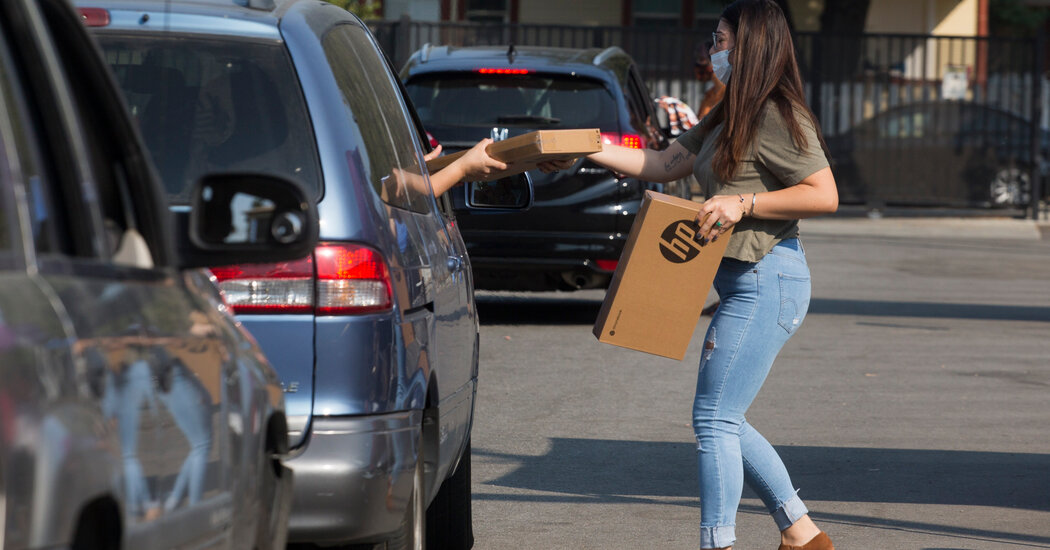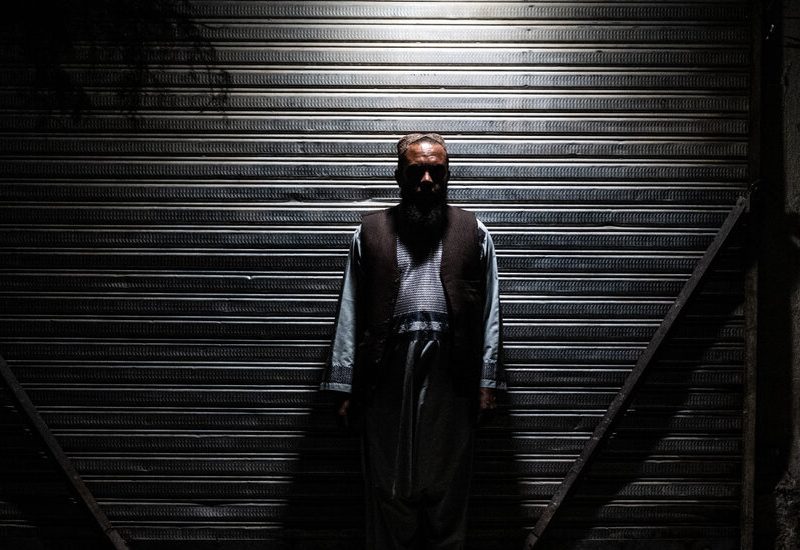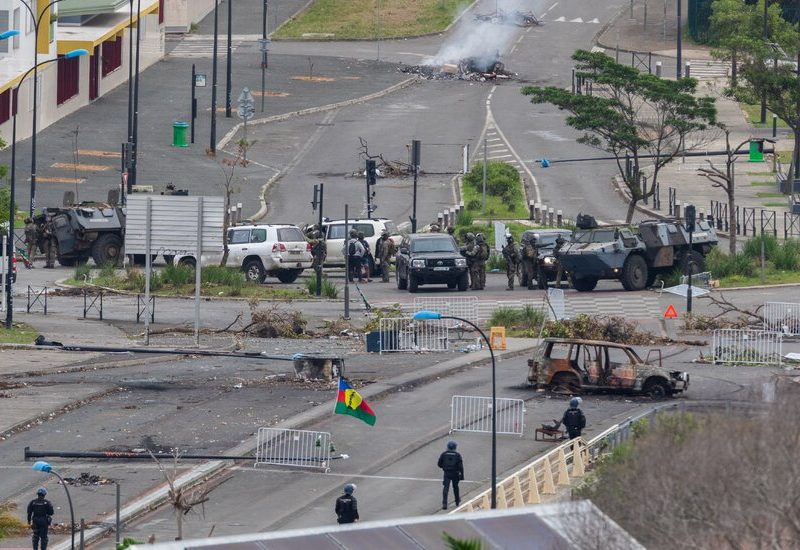In the fall of 2020, around the height of the debate over pandemic school closures, a lawsuit in California made a serious claim: The state had failed its constitutional obligation to provide an equal education to lower-income, Black and Hispanic students, who had less access to online learning.
Now, in a settlement announced on Thursday, the state has agreed to use at least $2 billion meant for pandemic recovery to help those students who are still trying to catch up. And it includes guardrails for how the money can be used.
Mark Rosenbaum, a lead lawyer for the plaintiffs, described it as a “historic settlement” that ensures that the money will go to students who are “most in need.”
“Kids weren’t getting anything close to the education that was deserved, and that was baked into a system of inequities to begin with,” he said.
The settlement will require school districts to identify and assess students who need the most support and use the money for interventions backed by evidence. Research shows that certain interventions, such as frequent, small group tutoring and extra learning time on school breaks, can produce significant gains.
State officials say the money — which will come out of a larger pot of dollars already set aside for districts, pending legislative approval — is part of an ongoing commitment to serving the most vulnerable students.
“This proposal includes changes that the administration believes are appropriate at this stage coming out of pandemic,” said Alex Traverso, a spokesman for the California State Board of Education.
The lawsuit did not focus on the state’s decisions to issue pandemic emergency orders or close schools — things that nearly every state did in the spring of 2020 — but on California’s response during remote learning.
Though California had some of the longest school closures in the country, the case centered only on the early months, from the spring to the fall of 2020.
State officials distributed more than 45,000 laptops and more than 73,000 other computing devices to students, according to court documents in the case.
But as many as one million children — about a fifth of California’s public school population — were left without sufficient access to online classes through September 2020, according to an estimate in court records.
The lawsuit, which represented several families in the Oakland and Los Angeles school districts, described the consequences after schools shut down: Some second-graders had online class only twice that spring; brothers had to share a single laptop, alternating to attend classes; a family living under the flight path for the Los Angeles International Airport had only a weak internet connection.
Elizabeth Sanders, a spokeswoman for the California Department of Education, said the state “acted immediately” when students were sent home from school and helped secure one million computers for students by the fall of 2020.
The lawsuit, though, argued that California had fallen short of its obligation to provide “basic educational equality,” noting that many of those without consistent internet and access to instruction were lower-income students of color.
New national research released this week underscored the long-term impact of the pandemic and remote learning: U.S. students have made up just a third of their pandemic losses in math, and inequality has widened, with students in poor communities at a greater disadvantage than they were five years ago.
Though nearly all state constitutions have provisions that have been interpreted by courts to require a meaningful, equitable, or adequate public education, “I haven’t seen that many examples of similar challenges in other states,” said Robert Kim, executive director of the Education Law Center, an education legal group that was not involved in the case.
Other pandemic-era school litigation has often focused on school closures, mask and vaccine mandates, or the education of students with disabilities.
California’s Constitution and case law, though, is particularly strong in framing public education as a “fundamental concern of the state,” Mr. Kim said.
Mr. Rosenbaum said California was chosen in part because it has the country’s largest public school population, with more than five million students, but similar cases could have been brought elsewhere.
“You could take a dart and throw it at a map of the United States, and you definitely would hit a state where kids suffered as a result of the pandemic,” said Mr. Rosenbaum, a lawyer with Public Counsel, a pro bono law firm in Los Angeles, who worked on the case with lawyers from the law firm Morrison & Foerster.
The politics in California — where the governor and state officials have embraced equity in education — could also have played a role in the result, legal experts said.
The $2 billion is a fraction of California’s overall education budget, which runs upward of $100 billion a year. The state also received federal aid to help schools recover from the pandemic, including $15 billion that expires in September.
The federal legislation required that just 20 percent of the dollars be spent on learning loss, with few parameters on how the money was spent.
The settlement seeks to take a stricter approach, with more oversight and accountability for districts.
The families in the lawsuit will not receive personal compensation as part of the settlement, said Lakisha Young, the founder and chief executive of the Oakland REACH, a parent group that worked closely with families in the lawsuit.
But, she said, “my heart kind of bursts to be able to say to them, ‘Your voice does matter.’”



